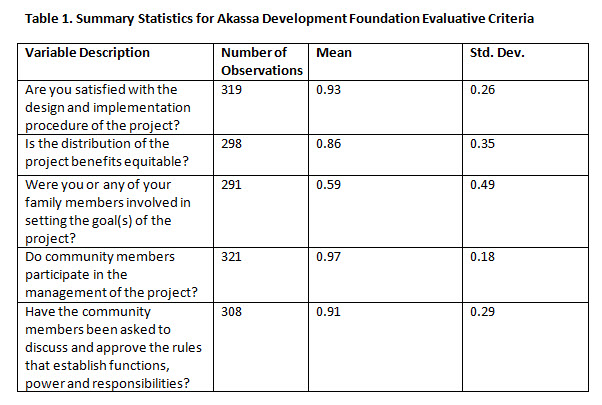The Niger Delta region presents a troubling paradox for Nigeria. The region is Nigeria’s main source of public revenue because it holds some of the largest oil and gas reserves in the country. Yet, states located along the Niger Delta suffer from higher rates of poverty compared to states in the southern part of the country.
Niger Delta states also have to cope with the challenges of environmental degradation, for example around 240,000 barrels of crude oil is spilt in the region per year. These spillages have had serious consequences on the livelihoods of those living in the delta, particularly those that make a living from fishing and crop farming.
All of these problems have created ongoing conflicts and security issues, especially with multinational companies extracting oil in the region. For example, Shell has announced plans to sell its troublesome Nembe Creek Trunk pipeline due to repeated oil theft and spillages.
There have been many efforts by Nigeria’s government, NGOs, international organizations and corporate social responsibility arms of multinational oil companies to improve the livelihoods of those living in the Niger Delta region. Unfortunately, many of these development efforts have been top-down and have failed to improve the situation in the region. In fact, the economy and environment along the Niger Delta continue to worsen, and issues of conflict and insecurity continue to escalate.
Therefore, the Brookings Africa Growth Initiative (AGI), the Foundation for Partnerships Initiatives in the Niger Delta (PIND), and the Nigerian Institute of Social and Economic Research are working together to evaluate the effectiveness of bottom-up or community-driven development (CDD) projects in the Niger Delta. Specifically, we are trying to understand why some of these projects have had at least perceived successes in an extremely challenging environment. We hope that by working with research partners on the ground in Africa, we at Brookings can help pinpoint successful development strategies that can be scaled up across the region and continent.
In order to determine whether certain community-driven development projects in the Niger Delta can be considered successful, we need to first look at the late Nobel Laureate Elinor Ostrum’s framework for analyzing institutions involved in collective action scenarios. Ostrum’s Institutional Analysis and Development (IAD) framework is essentially a checklist that helps social science researchers determine an institution’s role in providing a common good to actors in the institution. The framework pays particular attention to evaluative criteria, which are used by participants in an institution to determine if the project outcomes are satisfactory or need improvement. As Elisabeth King notes in her highly critical assessment of community-driven development, an investigation into the “black box” of the CDD institution would give a broader assessment of what is working and what is not, and what stands a chance of being replicated.
This past summer, AGI and our research partners conducted a survey based on the IAD framework to delve into community-driven development projects in the Niger Delta region. The two pilot case studies are the Akassa Development Foundation and the Rivers Songhai Farm Center. The Akassa Development Foundation works on developing local capacity to solve and manage development problems in the Akassa Community. The Songhai Farm Center works to train farmers in the Delta who then are expected to train others and set up satellite farms.
In order to provide some insight into what works for development in the region, our research team is currently working to analyze its survey responses. The Akassa Development Foundation survey in particular has yielded some results that help explain why the project has been successful. The summary statistics in Table 1 show that nearly 93 percent of survey respondents were satisfied with the project implementation and design of the Akassa development project. Additionally, a high percentage of the Akassa beneficiaries responded positively to factors that are hypothesized to have positive impact on the likelihood of success of a community development project based on the IAD framework. For example, the Akassa beneficiaries were asked if the community participated in the management of the Akassa Development Foundation, and nearly 97 percent of respondents said “yes.”

Another initial finding is that the correlation coefficient for respondent income level is not significantly correlated to the respondents’ reported satisfaction, as shown in Table 2. Education, while significant, is negatively correlated with the satisfaction outcome variable for the respondents. The negative correlation coefficient in this instance shows that respondents with lower levels of education (the majority) appear to be more satisfied with the implementation of the project. The correlation coefficients, in this case, suggest that the Akassa Development Foundation may have avoided elite capture of benefits by high-income and high-education groups, a common problem in bottom-up (decentralized) development approaches. However, further analysis on the distribution is needed to determine what conclusions can be drawn from the data.

In the coming weeks, AGI will delve deeper into the institutional arrangements of Akassa and the Songhai Farm Center. Household survey results will be analyzed further and combined with a review of the Niger Delta contextual environment and focus group surveys from key informants. Stay tuned to “Africa in Focus” for more discussion of economic issues in the Niger Delta, our ongoing research in the region and other AGI field research in Africa.
The Brookings Institution is committed to quality, independence, and impact.
We are supported by a diverse array of funders. In line with our values and policies, each Brookings publication represents the sole views of its author(s).




Commentary
Community-Driven Development in Nigeria’s Niger Delta Region
November 14, 2013